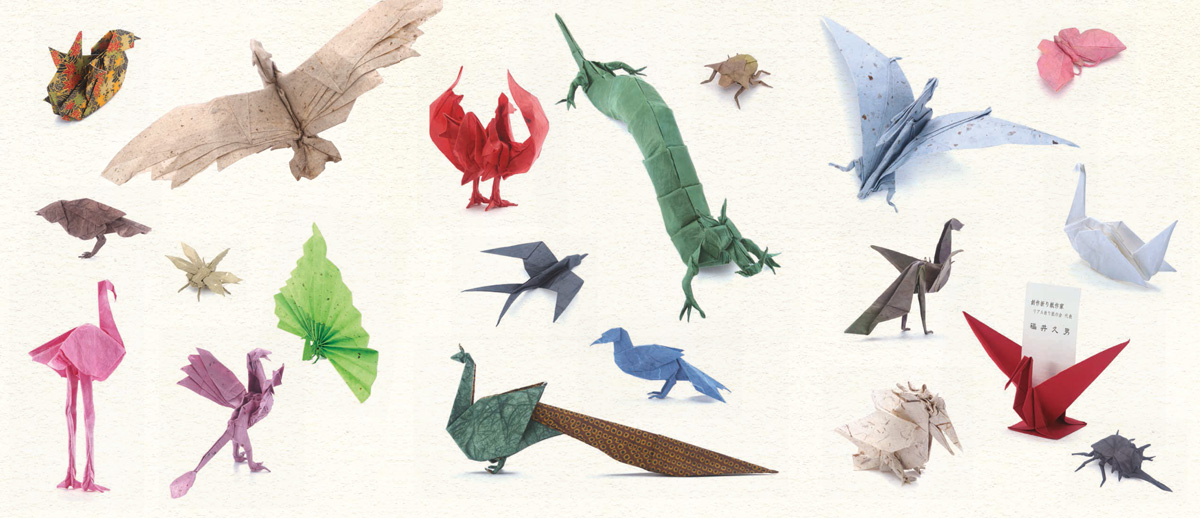
FANTASTIC
ORIGAMI FLYING CREATURES
24 AMAZING PAPER MODELS HISAO FUKUI
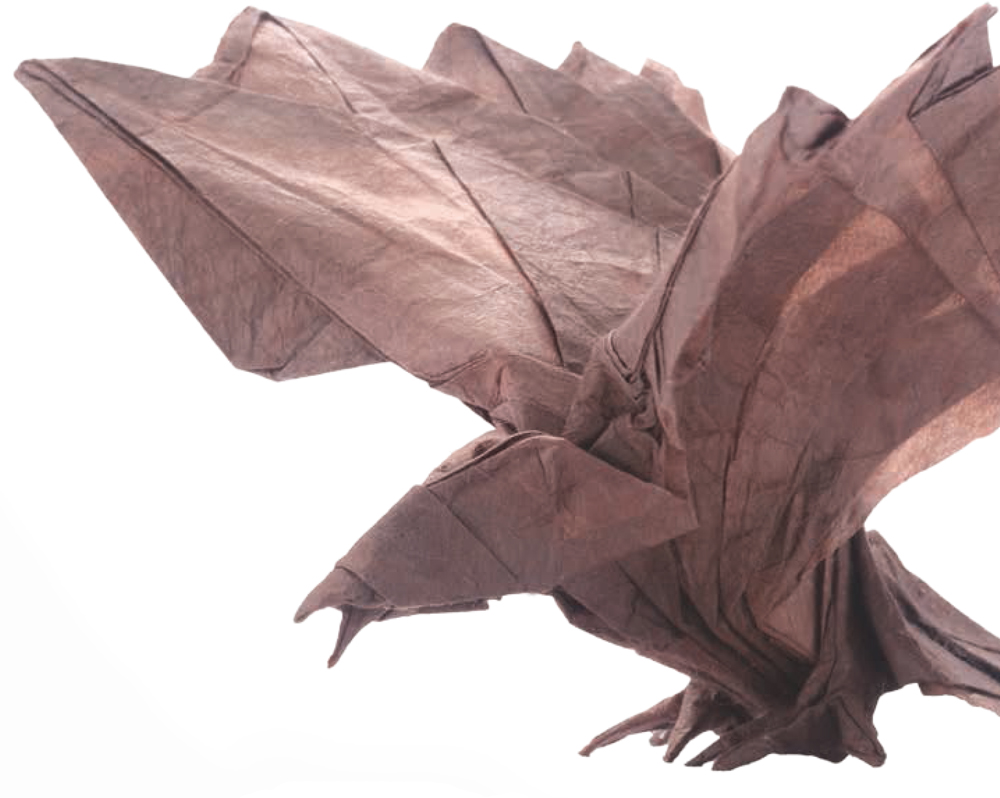
 INTRODUCTION
INTRODUCTION After the pleasant surprise of a strong positive reaction to my first book, and the confirmation that interest in lifelike origami models is deep and wide, my publisher approached me to write another book, and
Fantastic Origami Flying Creatures is the result! I chose the creatures of the sky as the theme for this book, but I also have two other books in Japanese that focus primarily on land animals, as well as a book on sea creatures, which will be published in English by Tuttle Publishing in the fall of 2020. Folding lifelike origami models is an art. The paper must be folded many times and in surprising ways to create a figure that closely resembles the look of animals, dinosaurs, insects, and so on. Although folding these lifelike forms may seem daunting at first glance, each model begins with a stage called basic folding,* which simplifies the operation. After the basic folding is complete, I provide step-by-step instructions on how to produce more realistic and complex forms. The basic folding itself can be time consuming, but its usually not difficultpeople of practically any age or skill level can accomplish it.
After completing the basic folding stage, you dont necessarily need to follow the rest of the steps exactly as specified. You can change small details such as the shape of the wings, position of the head, etc. to taste to make your origami unique. What sets lifelike origami apart from other simpler forms is that the finished products are three-dimensional and have many curved surfaces. You will often need to gently shape the model as a finishing touch to make the origami look just right. Sometimes, it may even take a few days to make small adjustments.
Use the photos in this book as a reference for your adjustments. I recommend applying glue to your models so they hold their shape over long periods. See for details. I recommend the challenge of using glue to anyone who is beyond the beginner level. However, first-time folders are welcome to try it as well. I recommend practicing by folding the entire model at least once before deciding to try one with glue appliedwhen the glue sets, theres no going back to fix earlier mistakes! Generally speaking, Japanese paper (washi) will produce the best results for the models described in this book.
It is pliable, natural-feeling, not prone to tearing, and it takes well to being moistened or glued. But in certain instances, commercially available origami paper (kami) is preferableparticularly for use when practicing. When using this sort of paper, I recommend using the thinnest paper you can find. This book features a wide range of origami models, from relatively easy to quite challenging in terms of difficulty. To assist beginners, Ive included detailed views for the more difficult procedures. If a given step seems confusing, look ahead to the next diagram for hints.
I hope you enjoy Fantastic Origami Flying Creatures! Fukui Hisao
Note *Basic Folding: In this book, each model has a stage called basic folding. In this stage, you should follow the instructions exactly. However, after this stage is complete, feel free to make minor adjustments, such as slightly adjusting folding angles and distances depending on your taste. The variations in the shape of the final product is part of the charm of lifelike origami.
A GUIDE TO THE FOLDING SYMBOLS
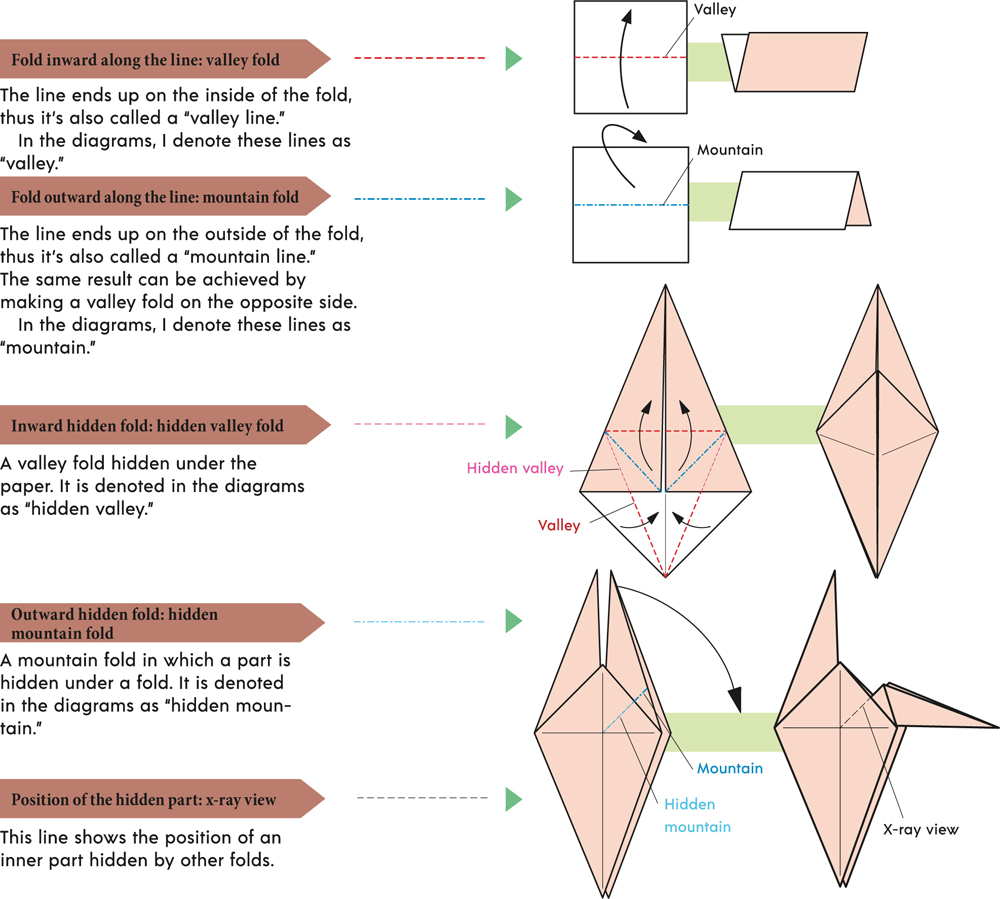
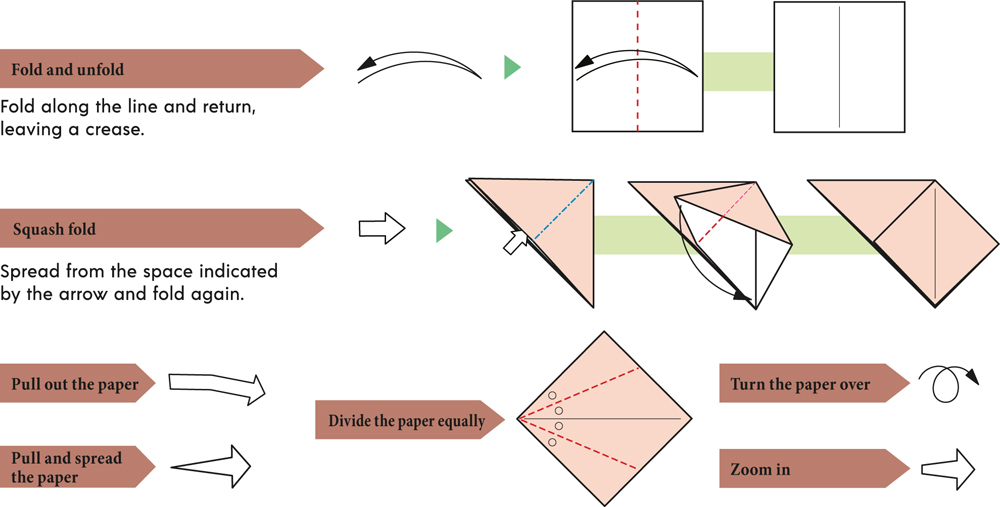 SPECIALIZED FOLDING PROCEDURES
SPECIALIZED FOLDING PROCEDURES
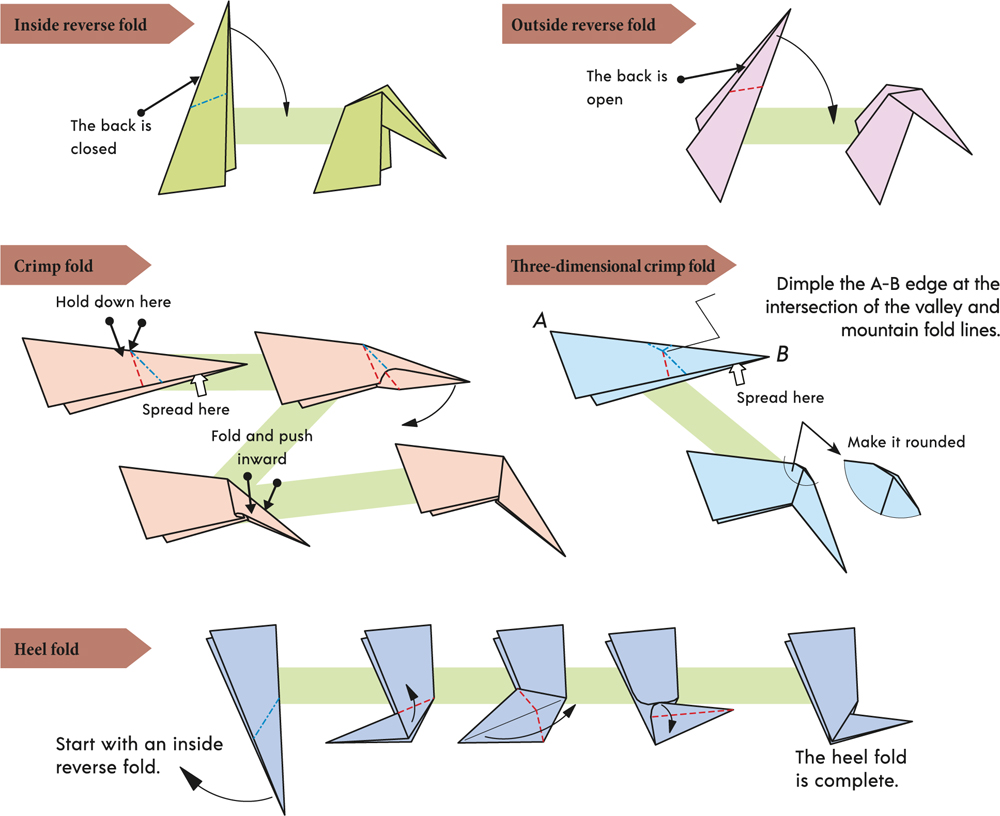
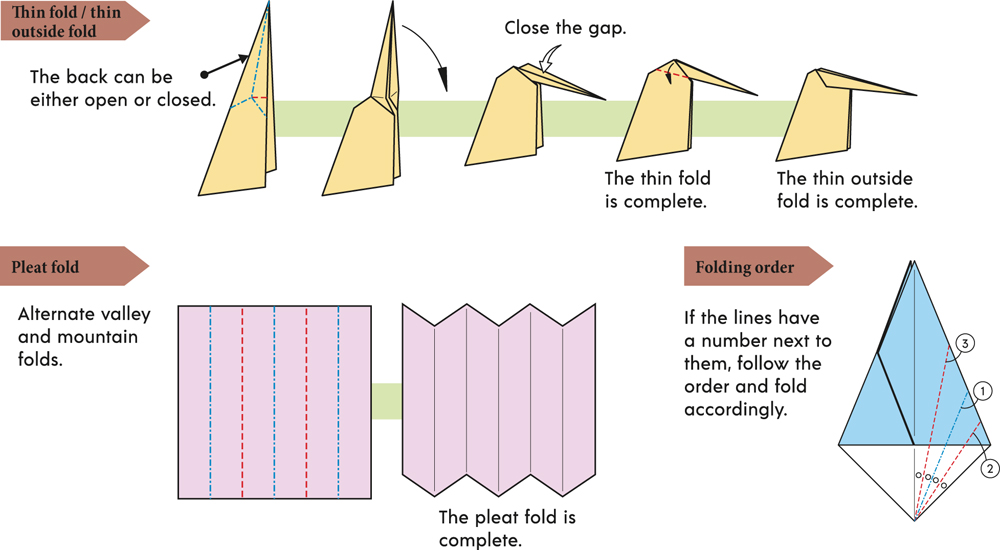
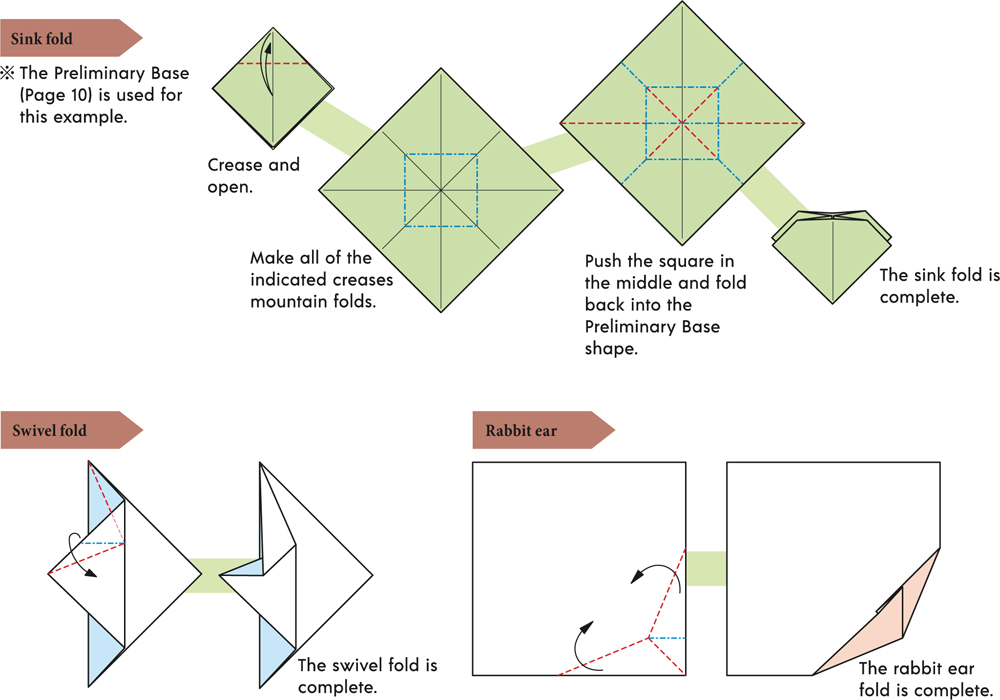
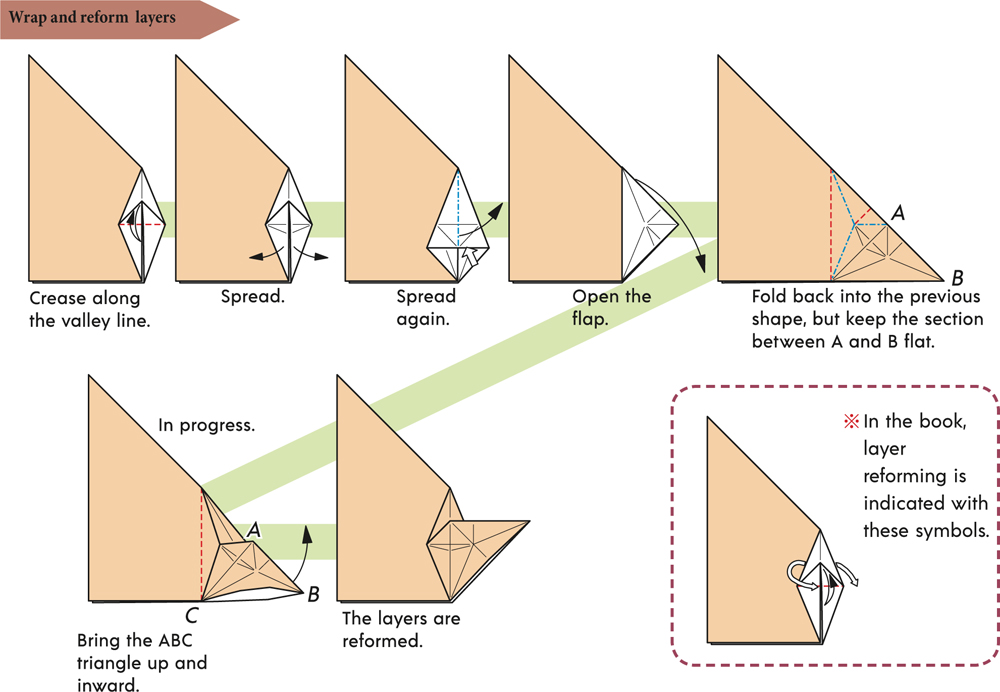 ORIGAMI BASES
ORIGAMI BASES
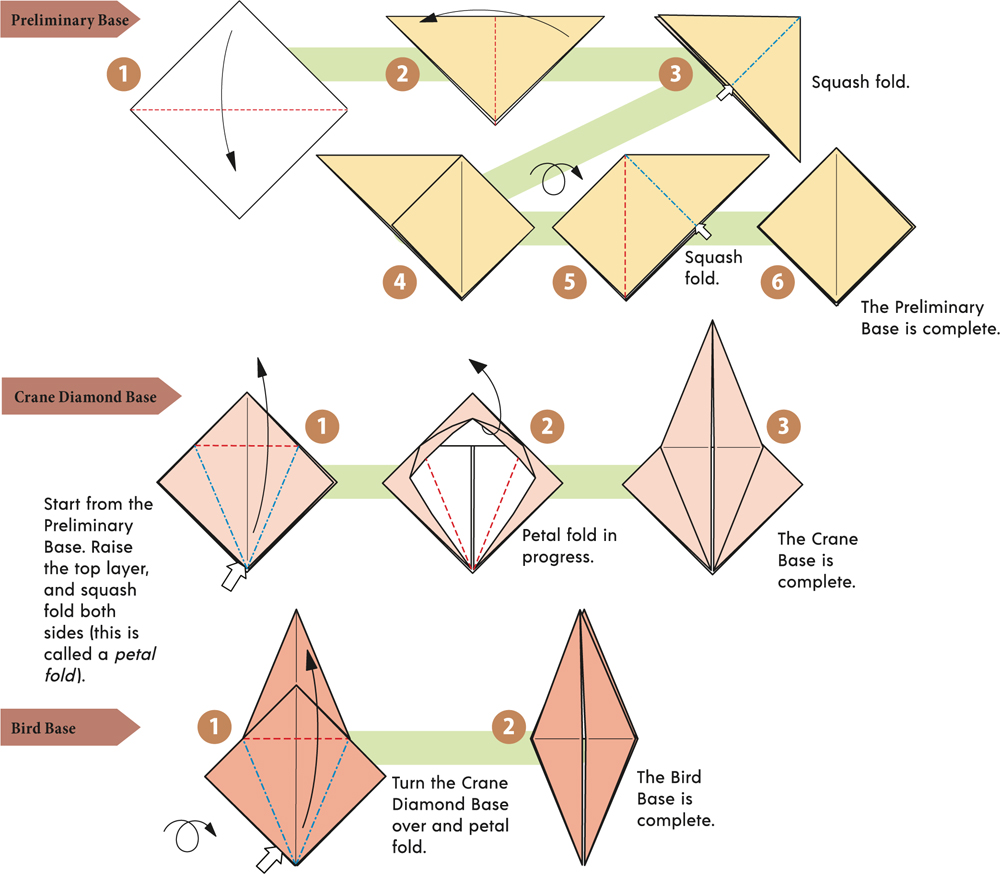
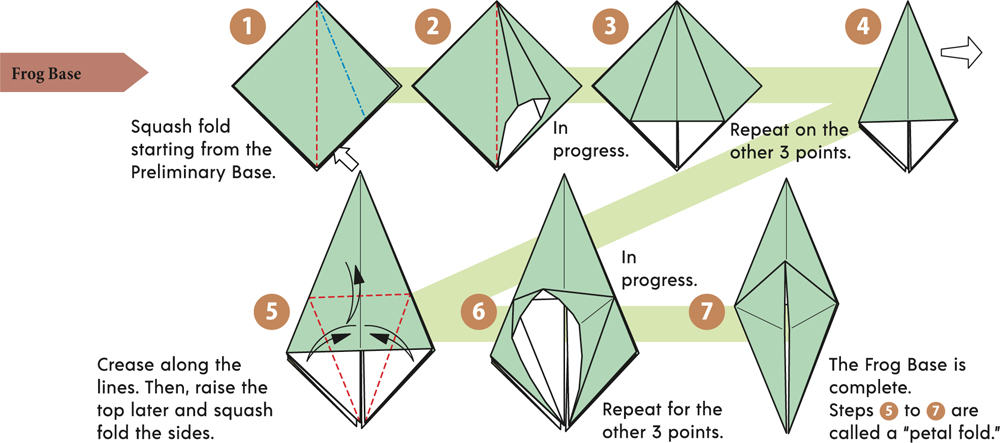
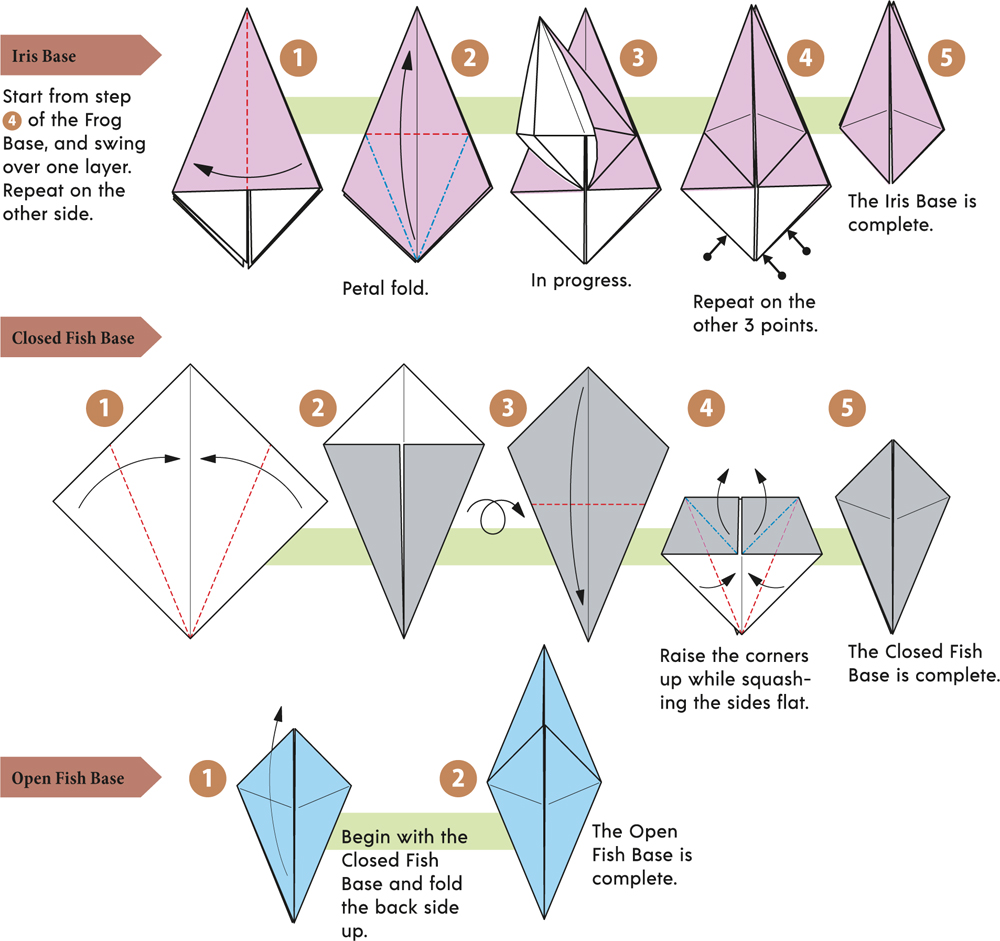
 HOW TO MAKE LIFELIKE ORIGAMI
HOW TO MAKE LIFELIKE ORIGAMI (Using Glue)
 About Using Glue
About Using Glue One of the keys to making lifelike origami is using glue to affect and set the final form. (I have added indications in the project instructions for when glue can be applied incrementally). (I have added indications in the project instructions for when glue can be applied incrementally).
Apply the glue (use slightly diluted craft glue) at the indicated points on the back side of the paper. After the folding is done, add more glue to each fold. Spread glue evenly to bind loose flaps together. However, if theres any sinking or squashing to be done after folding the basic shape, add glue to those parts last (after the sinking or squashing has been accomplished). If you accidentally put glue in the wrong place, simply wipe it off. 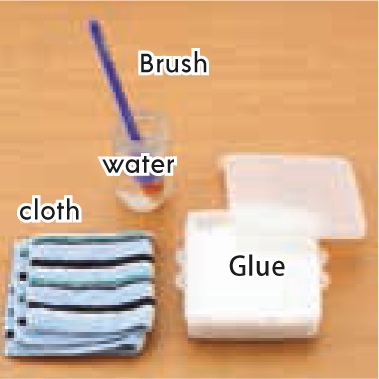 To prepare the glue solution, slightly dilute some craft glue with water.
To prepare the glue solution, slightly dilute some craft glue with water.  To prepare the glue solution, slightly dilute some craft glue with water.
To prepare the glue solution, slightly dilute some craft glue with water.
For application, I suggest you use a 10 mm brush. Also prepare a small water container and a piece of cloth to clean and wipe the brush. 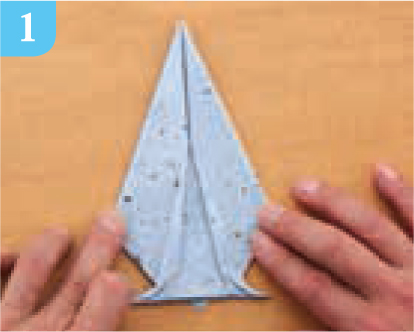 Follow the project steps until the text Start applying glue is annotated. I show the Pteranodon () in this example.
Follow the project steps until the text Start applying glue is annotated. I show the Pteranodon () in this example. 

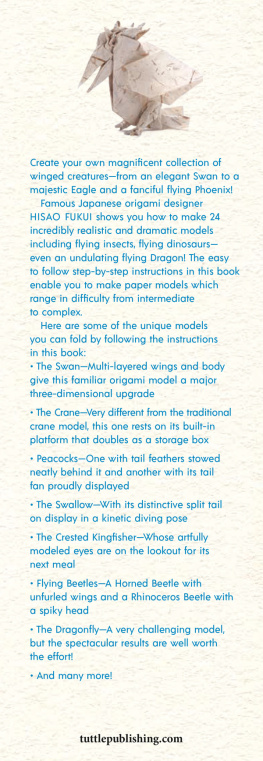
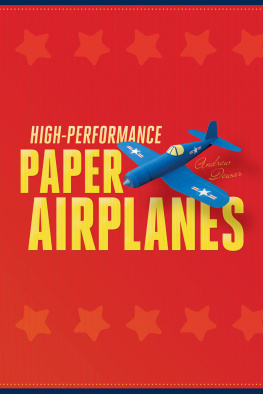
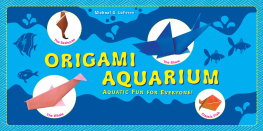
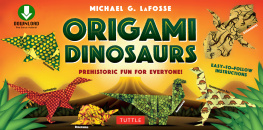
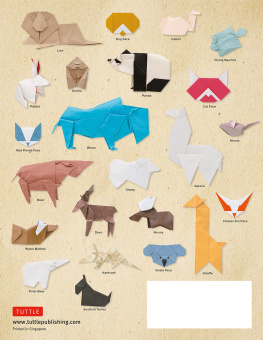
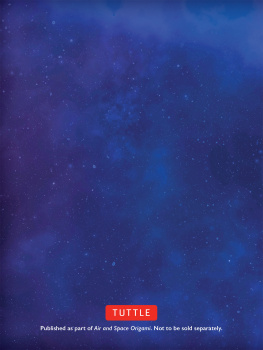
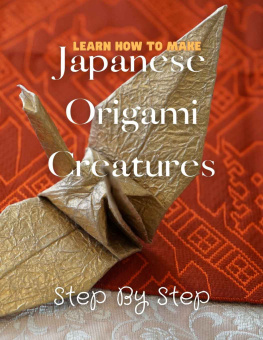
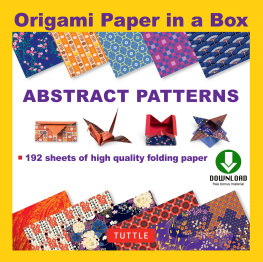

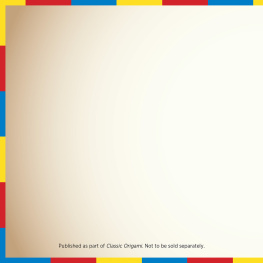
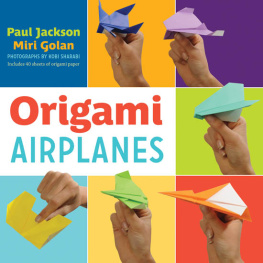
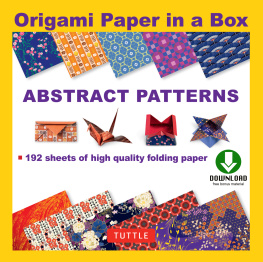

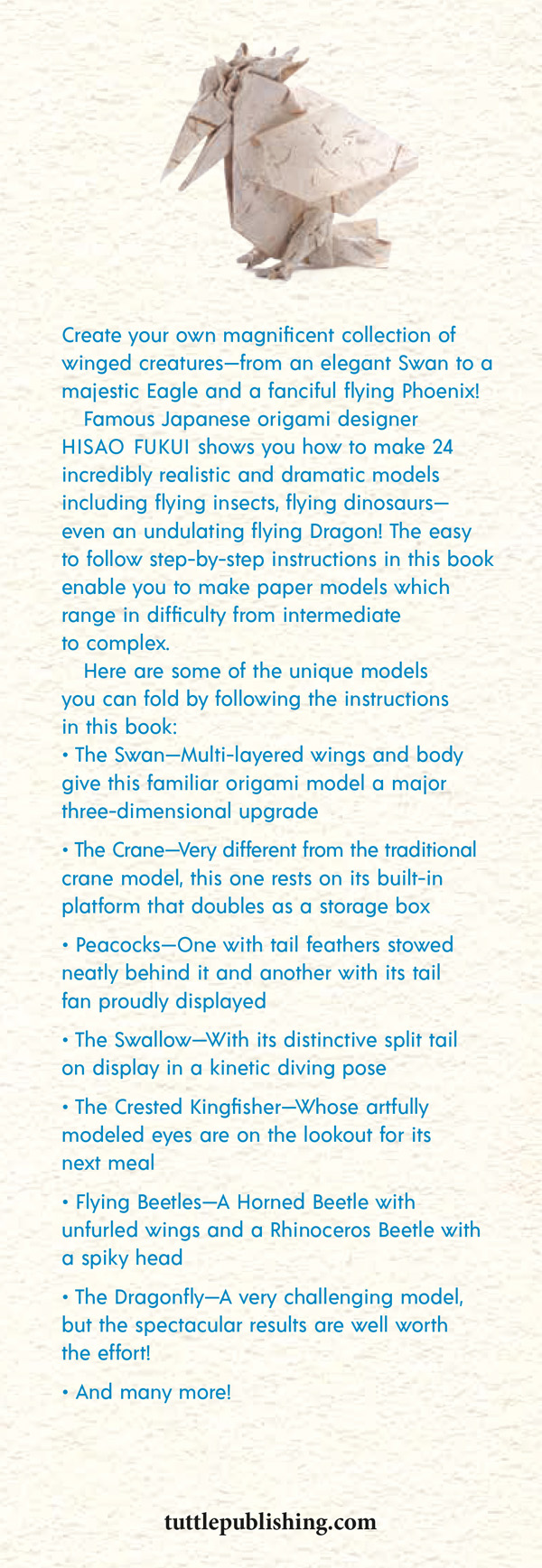
 FANTASTIC ORIGAMI FLYING CREATURES 24 AMAZING PAPER MODELS HISAO FUKUI
FANTASTIC ORIGAMI FLYING CREATURES 24 AMAZING PAPER MODELS HISAO FUKUI 
 INTRODUCTION After the pleasant surprise of a strong positive reaction to my first book, and the confirmation that interest in lifelike origami models is deep and wide, my publisher approached me to write another book, and Fantastic Origami Flying Creatures is the result! I chose the creatures of the sky as the theme for this book, but I also have two other books in Japanese that focus primarily on land animals, as well as a book on sea creatures, which will be published in English by Tuttle Publishing in the fall of 2020. Folding lifelike origami models is an art. The paper must be folded many times and in surprising ways to create a figure that closely resembles the look of animals, dinosaurs, insects, and so on. Although folding these lifelike forms may seem daunting at first glance, each model begins with a stage called basic folding,* which simplifies the operation. After the basic folding is complete, I provide step-by-step instructions on how to produce more realistic and complex forms. The basic folding itself can be time consuming, but its usually not difficultpeople of practically any age or skill level can accomplish it.
INTRODUCTION After the pleasant surprise of a strong positive reaction to my first book, and the confirmation that interest in lifelike origami models is deep and wide, my publisher approached me to write another book, and Fantastic Origami Flying Creatures is the result! I chose the creatures of the sky as the theme for this book, but I also have two other books in Japanese that focus primarily on land animals, as well as a book on sea creatures, which will be published in English by Tuttle Publishing in the fall of 2020. Folding lifelike origami models is an art. The paper must be folded many times and in surprising ways to create a figure that closely resembles the look of animals, dinosaurs, insects, and so on. Although folding these lifelike forms may seem daunting at first glance, each model begins with a stage called basic folding,* which simplifies the operation. After the basic folding is complete, I provide step-by-step instructions on how to produce more realistic and complex forms. The basic folding itself can be time consuming, but its usually not difficultpeople of practically any age or skill level can accomplish it. 

 SPECIALIZED FOLDING PROCEDURES
SPECIALIZED FOLDING PROCEDURES


 ORIGAMI BASES
ORIGAMI BASES


 HOW TO MAKE LIFELIKE ORIGAMI
HOW TO MAKE LIFELIKE ORIGAMI To prepare the glue solution, slightly dilute some craft glue with water.
To prepare the glue solution, slightly dilute some craft glue with water.  Follow the project steps until the text Start applying glue is annotated. I show the Pteranodon () in this example.
Follow the project steps until the text Start applying glue is annotated. I show the Pteranodon () in this example. 